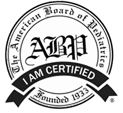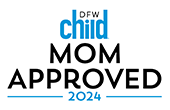 Schools, teachers, parents, and kids are being asked to be flexible and responsive to new information about the COVID virus. For some families, this may mean remote learning. For others, children may have the option to return to school in-person. Now is the time to prepare for what that may look like. The Centers for Disease Control (CDC) has released guidance for schools to open during COVID-19, which advises schools to “ensure adequate supplies are available to support healthy hygiene practices, and to routinely clean and disinfect objects and surfaces that are frequently touched.” In order to support these efforts, the CDC recommends parents reinforce good prevention habits, including washing hands often with soap and water for at least 20 seconds. The CDC also encourages face coverings as an important COVID-19 mitigation strategy, and some schools have opted to include masks in their back-to-school safety plan.
Schools, teachers, parents, and kids are being asked to be flexible and responsive to new information about the COVID virus. For some families, this may mean remote learning. For others, children may have the option to return to school in-person. Now is the time to prepare for what that may look like. The Centers for Disease Control (CDC) has released guidance for schools to open during COVID-19, which advises schools to “ensure adequate supplies are available to support healthy hygiene practices, and to routinely clean and disinfect objects and surfaces that are frequently touched.” In order to support these efforts, the CDC recommends parents reinforce good prevention habits, including washing hands often with soap and water for at least 20 seconds. The CDC also encourages face coverings as an important COVID-19 mitigation strategy, and some schools have opted to include masks in their back-to-school safety plan.
Practice is key
The best advice we can give is to start practicing. Don’t expect things to be perfect at first, but know that the more they wear masks, the more comfortable they will start to feel in it. By practicing at home, you give them a safe space to take it off for a break as needed.
Build mask endurance
As with any new habit, we recommend starting small. By starting in increments, you can see how they are tolerating it and build up accordingly. It is also particularly important to practice early if you have a child with sensory issues. Try to find a comfortable mask and reward them for the time they wear it by doing fun things while they have it on. You may even want to have a few different kinds and styles so that their ears get a break or they seem to have a “choice” in which mask they want to wear.
Make it fun
In addition to doing entertaining activities while wearing a mask, you can also make the mask itself fun by having your child decorate it to make it their own. If it’s a paper mask, they can use stickers. If it’s fabric, they can use fabric paint on the outside. Find fabrics that reflect their personality, like their favorite sports team or superhero. The masks should be something children enjoy wearing.
Explain the ‘why’
Talk to them about germs and how the mask can prevent them from spreading viruses. Older kids may have reservations because they think it is not cool or they are afraid it will contribute to acne, so it’s important to discuss the why behind wearing a mask so they are armed with information if they experience peer pressure to stop wearing it.
Discuss breaks
It’s important for parents to have a discussion with children to make sure they understand that if they need to take the mask off for a breather at school, to make sure they are away from people.



